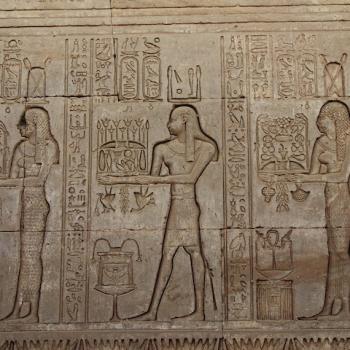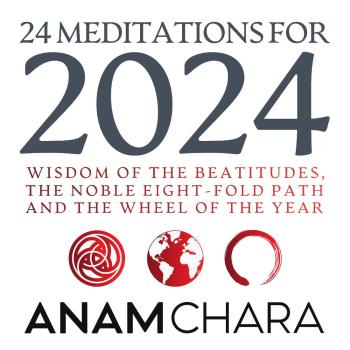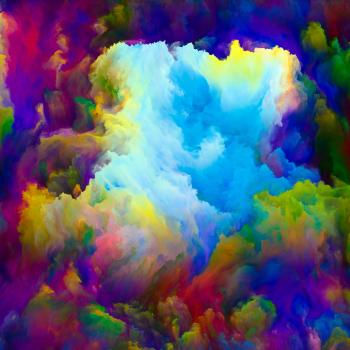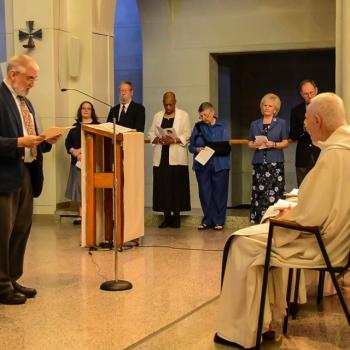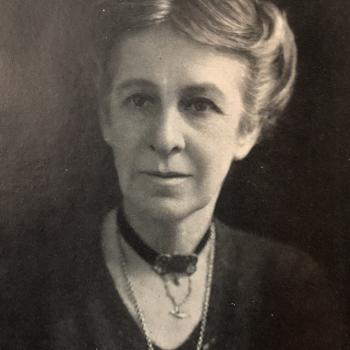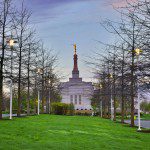
“There is in God (some say)
A deep, but dazzling darkness”
— Henry Vaughan
“Truly, you are a God who hides himself,
O God of Israel, the Savior.”
— Isaiah 45:15
“Your brightness is my darkness. I know nothing of You and, by myself, I cannot even imagine how to go about knowing You. If I imagine You, I am mistaken. If I understand You, I am deluded. If I am conscious and certain I know You, I am crazy. The darkness is enough.”
— Thomas Merton,
Prayer Before Midnight Mass,
Christmas 1941
God is always present, yet hidden. When the metaphysical poet Henry Vaughan described God’s “dazzling darkness,” or Thomas Merton declared that God’s brightness is his darkness, they were participating in a mystical tradition that can be traced back through Saint John of the Cross (“the dark night of the soul”) to the anonymous author of The Cloud of Unknowing (who equated darkness with God’s mystery) all the way back to the great mystical theologian of the sixth century, Pseudo-Dionysius the Areopagite, who eloquently spoke of God’s mystery as “hidden in the darkness beyond light, of the hidden mystical silence.”
When we enter into silent prayer, we make ourselves available to God’s hidden presence. Because God is “a God who hides himself,” all we typically experience in contemplation is silence — or the buzz of our own distracted thoughts and feelings, although the silence is always just beneath our mental chatter. Indeed, the heart of contemplative prayer consists of continually returning to the silence as our thoughts and emotions keep distracting us.
But when we let go of our distracting inner chatter, what do we find? Silence… darkness… unknowing.
By faith, we know God is present in the silence. Yet our faith may be weak, and often it seems to us that the silence is boring, or uncomfortable, or pointless. Sometimes in silence we may feel restless or anxious. Sometimes we can feel deep peace. But other times the silence just seems to highlight how unruly our inner lives really are.
Yet even in the most boring moments of restless, fidgety prayer, our souls remain — at a level deeper than our awareness —immersed in the brilliant light of God’s unseen, unfelt presence. Praying into the silence beneath the normal chatter of our thinking minds is like walking outside on a bright sunny day after being inside in a dimly lit room.
When we enter bright sunlight after being in the dark, our eyes blink in order to adjust to the light. Distracting thoughts during silent prayer function in a similar way. These thoughts are the mind’s “blinking” in order to shield itself from the dazzling darkness of God’s silent presence.
On a physical level, human eyes simply do not function well in darkness. So there is almost a primal fear of the dark, which can terrorize little children trying to sleep, or compound the suffering of those who struggle with depression, anxiety, or loneliness. On a mythic level we associate darkness with evil, and a recent study of Daylight Savings Time changes and crime rates affirm that perception: an extra hour of daylight can reduce serious crimes by 40% or more — at least, for that hour.
Even the Bible gets into the “darkness is bad” theme: consider this verse from the Gospel of John: “people loved darkness rather than light because their deeds were evil” (John 3:19). But other verses suggest that there is more to darkness than meets the eye, such is Psalm 139:12, addressing God: “even the darkness is not dark to you; the night is as bright as the day, for darkness is as light to you.”
How do we sort all this out? God is a God of Light, so darkness can be a metaphor for all the ways we human beings resist and reject God’s love and goodness. But that metaphor hardly makes darkness itself evil. Isaiah 45:7 reminds us that God created darkness as well as light, and we know that human beings and other living creatures need the rhythm of daylight and night for times of rest and rejuvenation. Just as the earth needs winter as a time of rest before the new life of spring and summer, so too does all of God’s creation need the “dark” time of rest to prepare for the hope of a new day.
Perhaps to understand the spirituality of darkness, we need to consider the Genesis creation story, which begins with God creating light to shine in the darkness. This is echoed in Micah 7:8: “When I sit in darkness, the Lord will be a light to me.” God is Light, and darkness is the container into which light is poured.
As Arlo Guthrie once folksily proclaimed, “You can’t have light without a dark to stick it in.” So the darkness of God’s mystery and seeming absence — the darkness of unknowing, of uncertainty and ambiguity, of feeling like God is far away — the darkness of the silence that resides deep inside each of us — is not an evil darkness but a receptive darkness, a place of hope and waiting.
And when the light comes, it dazzles us. And our eyes blink. Just like when we encounter silence, our mind “blinks” with distracting thoughts.
The key to contemplative practice is perseverance. Take time to sit in the silence each and every day. However you respond to the silence — with feelings of peace, or boredom; restfulness, or fidgetiness — simply notice it, and let go of any impulse to judge or criticize. Let your relationship with the silence be what it is. God is present, whether you feel it or not. God loves you, whether your feel it or not. God’s dazzling light is bathing over you, whether you feel it or not. The invitation of contemplation is to simply bask in the darkness that is dazzled by inaccessible light.
Enjoy reading this blog?
Click here to become a patron.








